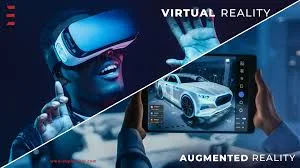Embarking on the journey of Unity Engine VR development can feel like stepping into a vast, uncharted territory. Many aspiring developers find themselves asking:
- Where do I start with VR development in Unity?
- What equipment and software are essential?
- How can I make my VR experience truly immersive?
If these questions resonate with you, you're in the right place. Let's explore the world of Unity Engine VR development together, breaking down complex concepts into digestible insights.
Check out our guide on Android VR App Development: A Comprehensive Guide.Getting Started with Unity for VR Development
Before diving into VR development, it's crucial to have the right tools and a clear roadmap. Here's how you can begin:
Install Unity: Download and install the latest version of Unity from the official website. During installation, ensure you include the Android Build Support and XR Plugin Management packages, as they're essential for VR development.
Set Up Your Project: Launch Unity and create a new project. Navigate to the Project Settings and enable the XR Plugin Management. This step integrates VR support into your project seamlessly.
Choose the Right SDK: Depending on your target VR platform (like Oculus, HTC Vive, or PlayStation VR), download and integrate the corresponding Software Development Kit (SDK) into your project.
Understanding the Basics of VR in Unity
Virtual Reality transforms how users interact with digital content, offering immersive experiences that traditional platforms can't match. To harness this potential:
Learn C# Programming: Unity utilizes C# as its primary scripting language. Familiarizing yourself with its basics will empower you to create interactive VR elements.
Explore Unity's Interface: Spend time navigating through Unity's interface. Understanding panels like the Scene, Game, and Hierarchy will streamline your development process.
Experiment with Tutorials: Unity offers a VR Development Pathway that provides hands-on tutorials to solidify your understanding.
Designing Immersive VR Experiences
Creating a VR application isn't just about coding; it's about crafting an experience. Here are some tips to make your VR project stand out:
Prioritize User Comfort: Ensure smooth frame rates and minimize latency to prevent motion sickness.
Intuitive Controls: Design controls that feel natural. For instance, using hand gestures or gaze-based interactions can enhance user engagement.
Immersive Audio: Incorporate spatial audio to make the virtual environment more lifelike.
Iterative Testing: Regularly test your application with real users to gather feedback and make necessary adjustments.
Common Challenges and How to Overcome Them
Venturing into VR development comes with its set of challenges. Here are some common hurdles and strategies to tackle them:
Performance Optimization: VR applications require high performance. Utilize Unity's Profiler to identify bottlenecks and optimize your code and assets accordingly.
Device Compatibility: With various VR headsets available, ensuring your application runs smoothly across devices is vital. Test on multiple platforms and consider using Unity's XR Interaction Toolkit for cross-platform development.
User Interface Design: Designing UI for VR is different from traditional screens. Place UI elements within the user's field of view and ensure they're easily accessible without causing discomfort.
Staying Updated with the VR Community
The VR landscape is continually evolving. To stay ahead:
Join Online Forums: Participate in communities like the Unity Forums or Reddit's r/VRdev to share experiences and learn from others.
Attend Workshops and Webinars: Engage in events hosted by Unity and other VR organizations to gain insights into the latest trends and technologies.
Continuous Learning: Explore courses like Create with VR to enhance your skills and stay updated with new features.
Conclusion
Embarking on the path of Unity Engine VR development is both challenging and rewarding. By starting with the basics, focusing on user-centric design, and staying connected with the community, you can create immersive experiences that captivate users. Remember, every expert was once a beginner. So, take that first step, experiment, and let your creativity lead the way.
For more insights and resources on VR development, visit Enemzy.blogspot.com

Comments